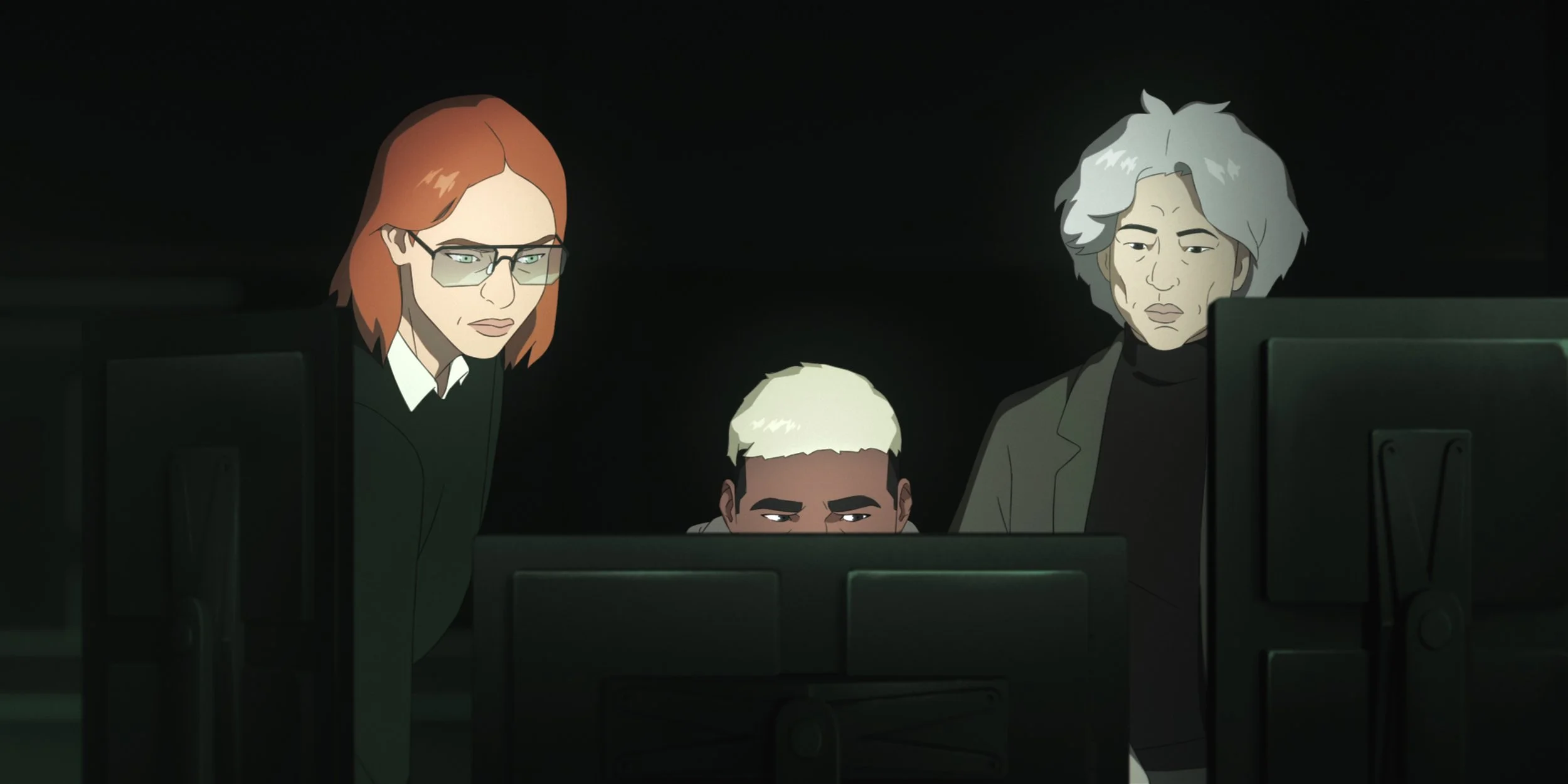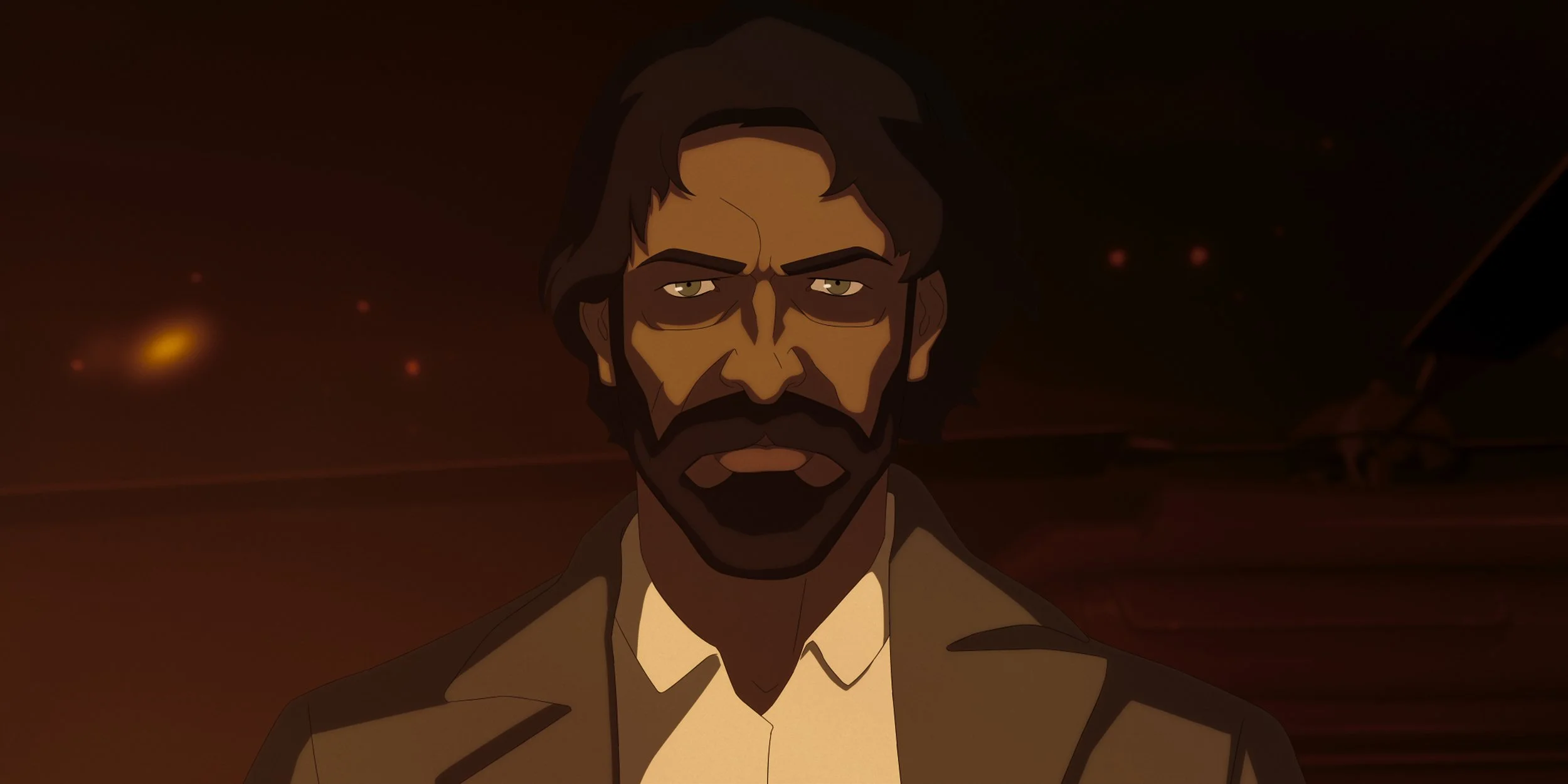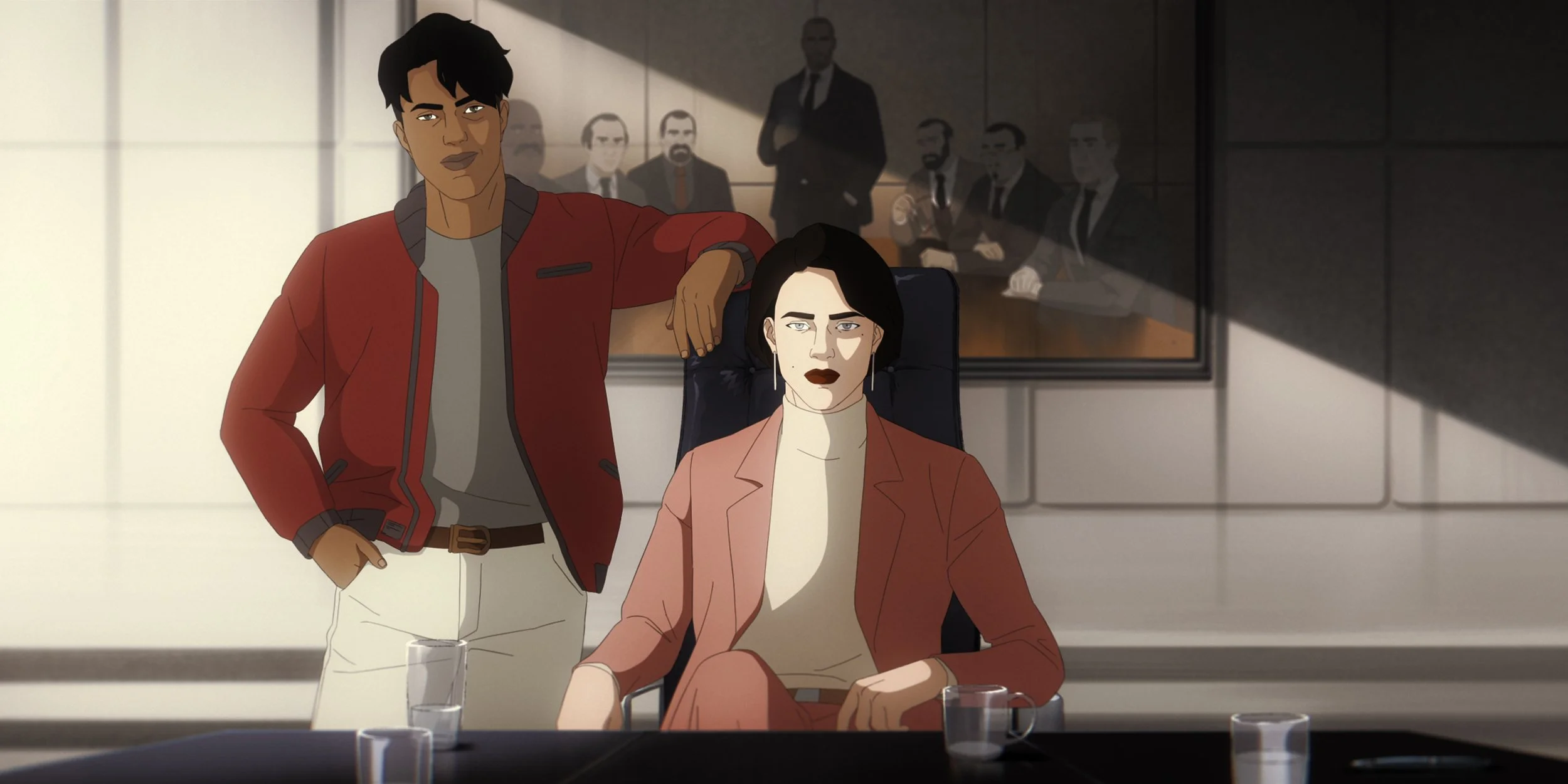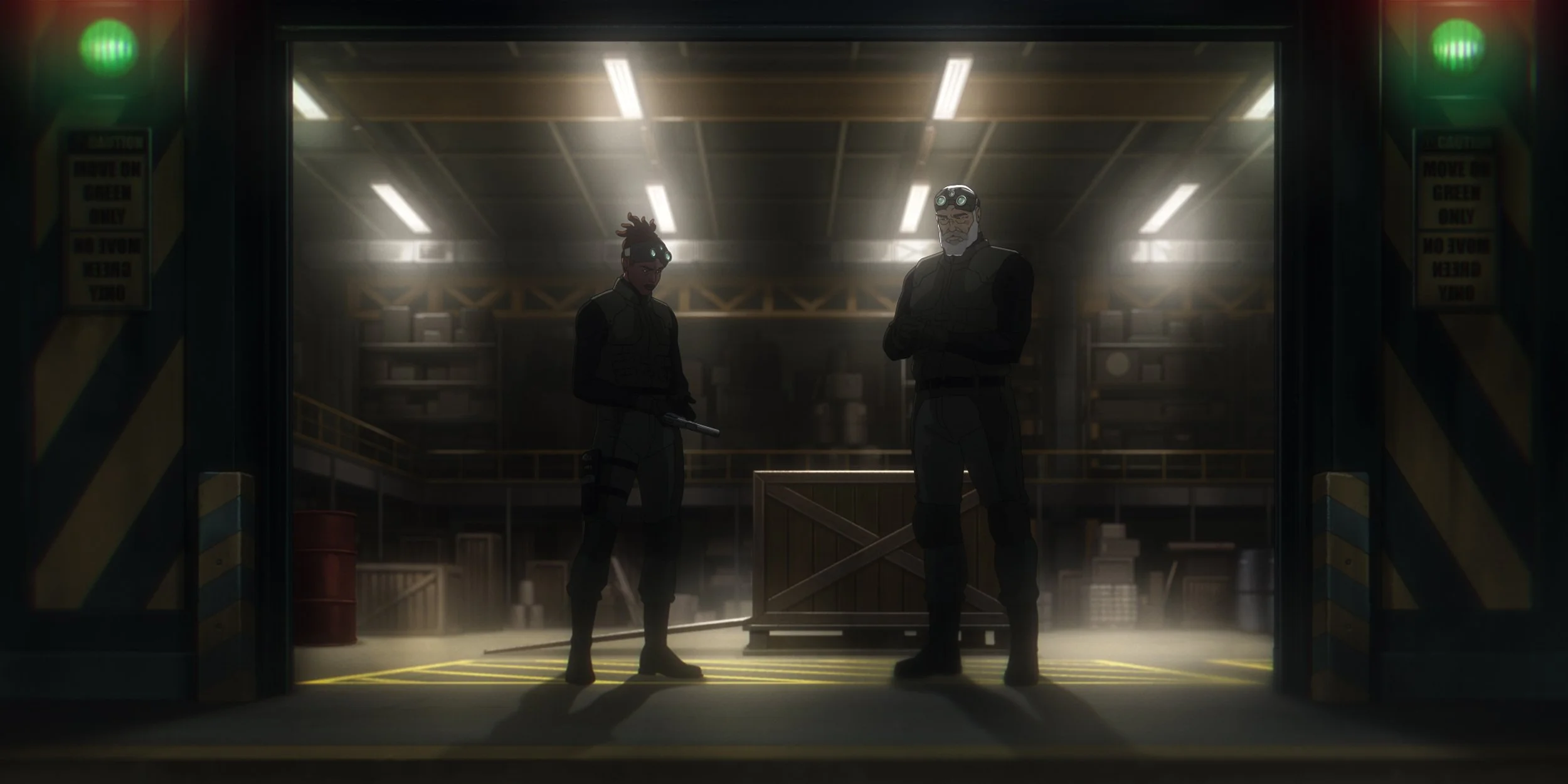Splinter Cell: Deathwatch Season One Review
Normally, a TV series like Splinter Cell: Deathwatch goes straight into what I call my “watch for fun” pile. The series is exactly the kind of project you expect to exist mainly to keep the Splinter Cellbrand alive rather than move the franchise forward. Ubisoft’s been more than happy to cash in on the Tom Clancy name for a quick buck or two, and Sam Fisher has been relatively AWOL outside of cameo appearances in other Tom Clancy games since 2013’s Splinter Cell: Blacklist. So, you can imagine how an animated series could’ve easily fallen into the cheap content trap, especially on Netflix.
So, what made me take it seriously?
The people involved. Liev Schreiber voices Sam Fisher. John Wick creator Derek Kolstad writes and produces. Animation comes from Sun Creature (Flee) and Fost (Wolfwalkers, My Father’s Dragon). That mix of talent made me curious, and it turns out Deathwatch actually earns its place in the franchise.
Story
Set about twelve years after Blacklist, the series finds Sam Fisher living in isolation until rookie agent Zinnia McKenna (Kirby Howell-Baptiste) arrives with evidence of a global threat. Her arrival drags him back into a world he thought he had left behind and forces him to confront both new enemies and old ghosts.
Without giving too much away, the danger is both political and personal. Connections to Fisher’s past missions draw him into a growing conspiracy that spans Europe. The newly rebuilt Fourth Echelon provides off-site support and acts as the show’s tactical foundation.
What stands out is how much Deathwatch focuses on legacy. It honors what came before while testing new ideas and perspectives. It asks how much longer someone like Fisher can keep operating in a world that has changed around him.
Each of the eight episodes moves carefully, building tension from silence and information instead of explosions. The tone feels closer to a spy novel than a typical action show, which is exactly what Splinter Cell has always needed.
Performances
Replacing Michael Ironside was a big gamble, but Liev Schreiber makes it work. His Sam Fisher sounds older and heavier, like a man who has carried the job for too long. There are moments when I wanted a little more bite, but the weariness he brings fits perfectly.
Kirby Howell-Baptiste gives Zinnia a strong presence right away. She is not a rookie in over her head. She is calculated, composed, and observant. Watching her with Fisher feels like watching two people from different generations who understand each other more than they want to admit.
Janet Varney gives Anna Grímsdóttir a quiet weight. Gone is the manipulative edge she once had. This version of Grim is steady, tired, and done pretending everything is fine. You can hear the fatigue in her voice, and it makes her scenes feel real.
Helen Hong and Joel Oulette bring subtle humor as Jo Ahn and Thunder, but it never breaks the tone. They sound like real people trying to stay sane while doing a stressful job.
Bella Dayne’s Freya Niemeyer is driven by obsession, but Dayne keeps her grounded. Freya’s determination feels personal, almost tragic. Navid Negahban’s Reza “Gunther” Karimi commands every scene he’s in. His calm, careful delivery makes him more intimidating than anyone carrying a gun.
Kari Wahlgren and Aleks Le add layers to Diana and Charlie Shetland. Diana is focused and pragmatic. Charlie questions everything around him. Their story fits the show’s theme of what happens when the next generation inherits someone else’s war. Kiff VandenHeuvel’s brief return as Douglas Shetland is haunting and effective.
No one in this cast overacts. Everyone understands the tone. They let silence and small gestures carry the moment, which is exactly how Splinter Cell should feel.
Direction
Guillaume Dousse directs all eight episodes with a clear vision of what this world should look like. The lighting, framing, and camera placement all focus on realism. The tension comes from quiet movement and from knowing what might be hiding in the dark.
Derek Kolstad’s overall creative control helps keep the pacing steady, but it is Dousse’s direction that gives the show its style. The result feels closer to Heat than to John Wick: calm, cold, and deliberate.
Writing
Derek Kolstad wrote the first, seventh, and eighth episodes. David Daitch and Katie J. Stone wrote episodes two through four, while Naomi Davis and Matias Wulff wrote episodes five and six. Despite multiple writers, the tone and pacing stay consistent.
Kolstad sets the foundation with character and tone, and the rest expand that work instead of copying it. Daitch and Stone focus on spycraft and political details. Davis and Wulff lean into morality and introspection. The writing flows smoothly from one to the next.
Each episode treats stealth as a consequence. Every mission leaves a mark, and silence always has meaning. The show takes its time showing the weight of Fisher’s actions instead of rushing to the next explosion.
Some of the philosophical dialogue about technology goes on a little long, but it never derails the story. It gives the viewer time to breathe before the next mission begins.
Music and Sound
Danny Bensi, Saunder Jurriaans, and Chase Deso’s score fits the tone perfectly. It’s slow, uneasy, and always present without taking over a scene. You feel it more than you hear it.
The sound design is just as strong. Every small detail, from a creaking hinge to distant static, adds to the tension. The mix keeps voices grounded in the environment. When Fisher talks, you can hear the space he’s in, not just the microphone. It sells the illusion of stealth and isolation.
Cinematography and Editing
Sun Creature and Fost make the show look cinematic. Every shot has purpose. Light and shadow are used to guide your attention and tell the story.
Dousse and his team keep the camera movement slow and deliberate. You always understand where Fisher is and what he’s risking. When action hits, it’s quick and clean.
Color choices reinforce the mood. Cool greens and blues dominate the night missions, while the rare daylight scenes feel harsh and exposed. Editing balances that rhythm, switching between quiet build-up and sharp bursts of action.
Even the transitions are smart. Match cuts and security feed dissolve to tie everything together and keep you aware of who’s watching who.
Production Design
Every environment feels real. Fourth Echelon’s base is cluttered, old, and full of equipment that looks functional rather than decorative. Displace International’s facilities are sleek and cold. Each location reflects the people who operate in it.
Fisher’s gear is practical, built for survival rather than style. Zinnia’s setup uses more modern tech, showing how the two approach their work differently.
Fost’s backgrounds are detailed and believable. The series moves from frozen docks to underground data centers, and each space feels mapped and functional. It never looks like animation trying to look real. It just feels like a living world.
Why It Works and Why It Doesn’t
Deathwatch works because it remembers what Splinter Cell has always been about: silence, precision, and consequence. It doesn’t try to be flashy or nostalgic. It trusts subtlety, slowing down to let tension build in the silence, trusting the viewer to meet it halfway. Every scene feels intentional and does more than look cool.
What makes that work is how much the show values information. Every piece of intel, every exchange, every mission has weight. It asks who controls the truth, who distorts it, and what the cost of knowing it really is. That focus gives the series its own identity amongst the Tom Clancy universe. It's less about saving the world and more about understanding what kind of world is worth saving.
Fisher's story reflects that perfectly. It isn't patriotic, at least not in the traditional sense. He's not fighting for a flag or ideology. He's fighting to understand his place in a system that's changed without him. That makes the story deeply personal. Fisher operates like someone who knows the job is more about corporate espionage than infiltrating a secret base. It's also about survival and living with the consequences of what survival demands. It’s the kind of introspection that gives the series emotional depth beyond its missions.
Deathwatch is also one of the few video game adaptations that feels self-assured. You don't need to know the games to follow the show's narrative, but if you do, the callbacks are rewarding. They aren't wink-and-nod moments and more quiet reminders of where Fisher has been and what he’s lost. The show earns its connection to the franchise by understanding it, not by quoting it.
Still, the pacing that makes the show so deliberate can also slow it down. The middle episodes linger a little too long on setup and conversations that explain what the visuals already show. When it moves, it moves with confidence. When it doesn’t, you can feel the weight of that stillness. The finale resolves Fisher’s emotional arc well but leaves a few threads hanging, more like preparation for a second season than a mystery.
Even with those missteps, Deathwatch succeeds by being deliberate. It knows what story it's telling and refuses to rush it. Every bit of tension feels earned, and every silence feels loaded. It may not be flawless, but it's the kind of adaptation that proves patience and precision still matter.
Support Austin B Media
Enjoy reading this review? Support Austin B Media on Patreon to get early access to reviews like this and more exclusive content.
Wrap-up
Splinter Cell: Deathwatch is the most thoughtful the series has been in years. It treats Sam Fisher like a person instead of a brand mascot and respects the intelligence of the audience.
It isn’t perfect, but it feels like Splinter Cell. It’s smart, quiet, and patient. It doesn’t need to shout to make an impact.
That’s why I moved it from my “for fun” pile to my “for review” pile. It’s more than a simple adaptation. It’s a confident return to a world that has been silent for too long.
Until next time!
Rating
★★★☆☆
Where to Watch Splinter Cell: Deathwatch Season One
Splinter Cell: Deathwatch Season Oneis now available to stream with a Netflix subscription.







